How the Internet of Things Will Transform Application Monitoring
By Alex Carter on September 25, 2024
The proliferation of linked devices has altered how firms manage operations, necessitating ongoing monitoring. Real-time tracking helps to increase productivity, reduce expenses, and remain competitive. Industries including manufacturing and healthcare rely on connected networks to speed up processes, increase security, and make better decisions. As more devices become accessible, the demand for trustworthy monitoring solutions rises, encouraging innovation and operational success.
What is IoT Monitoring?
Internet of Things (IoT) monitoring entails following and evaluating dynamic systems, as well as processing enormous amounts of data and alarms from linked devices. It facilitates the integration of devices and business activities by gathering and analyzing varied IoT data from devices, consumers, and applications at scale. This technique optimizes performance across several apps, APIs, networks, and protocols, hence closing performance gaps.
IoT Monitoring Process
IoT monitoring is an organized technique for managing and optimizing connected devices that generally follows a three-step procedure. Here’s a breakdown of every step:
Step 1: Device Discovery
The first step of IoT monitoring focuses on finding, categorizing, and integrating all IoT devices into a single network. This can be difficult due to the diverse variety of device models, data formats, and firmware versions.
Types of IoT Devices:
- Sensors: Gather real-time data from their surroundings;
- Controllers: Analyze data and trigger actions;
- Actuators: Execute commands, such as opening a valve or turning off machinery.
Teams register devices using methods such as service discovery protocols, network scanning, and manual registration into centralized IoT systems. Prior to network access authentication, each device is issued a unique identification and metadata tags.
Step 2: Continuous Monitoring and Real-Time Interventions
Many industries, such as energy and wastewater treatment, rely on IoT devices to operate continuously, limiting downtime only to maintenance windows. In these cases, IoT sensors consistently stream real-time data to monitor key performance metrics, including:
- Operational states;
- Power consumption;
- Network connectivity.
Step 3: Real-Time Alerts and Automation
IoT devices are essential for maintaining safety and operational efficiency. In high-risk areas such as oil fields or power grids, device failures can cause major disruptions or hazards. Real-time monitoring is crucial to quickly identify issues and take immediate action.
To support this, organizations use IoT databases capable of:
- High-speed data aggregation;
- Advanced analytics;
- Time-series data handling.
Integrating big data security analytics into IoT monitoring enhances threat detection and safeguards critical infrastructure from potential cyber risks.
Automation increases system dependability. Automated robotic systems can execute complicated jobs with accuracy in industries such as manufacturing. These systems can pause production during breakdowns, modify machines in real time, and avoid accidents faster than human operators.
IoT Network Architecture: How Does It Work?
The IoT network architecture is divided into four layers, each having a specialized purpose in enabling smooth communication, data processing, and user engagement inside the IoT framework.
Sensing Layer
The sensor layer forms the foundation for all IoT activities. It is made up of linked devices and sensors that collect real-time data on device condition and performance indicators. These devices function as data sources, sending acquired data to the next layer for further processing.
Network Layer
The network layer handles most IoT monitoring, connecting the sensing layer to the internet and securely transmitting data via IoT gateways and routers. These devices, tailored for IoT, function like traditional switches and routers. Encryption and authentication protect data at this stage. Wi-Fi, Bluetooth, and Ethernet are common connectivity techniques.
Data Processing Layer
In the data processing layer, the acquired data is examined and correlated to produce actionable insights. This layer guarantees that raw data is turned into relevant metrics that organizations may use to make decisions. Communication between the network and data processing levels is commonly accomplished using TCP/IP protocols, allowing for smooth data flow and efficient processing.
Application Layer
The application layer is the highest layer that displays processed data to end users. Users may monitor device behavior, evaluate patterns, and take appropriate action using user-friendly interfaces on apps or online platforms. Security is a top focus at this layer, with protocols such as HTTPS protecting user interactions and data.
Use Cases of IoT Across Industries
Real Estate
IoT enhances real estate by using smart devices to gather data on properties, amenities, and safety. This improves listings, browsing experiences, energy efficiency, and building management, leading to better decision-making.
Key IoT Applications in Real Estate:
- Smart Buildings: IoT monitors climate and air quality for energy efficiency and comfort;
- Building Security: IoT surveillance and smart locks enhance security and access control;
- Facility Management: IoT tracks equipment performance to prevent downtime and improve maintenance.
Manufacturing
IoT is transforming manufacturing by enabling real-time data collection, optimizing processes, improving worker safety, and identifying inefficiencies. This leads to better product quality, less waste, and higher productivity.
Key IoT Applications in Manufacturing:
- Predictive Maintenance: Sensors monitor equipment in real time to prevent downtime;
- Supply Chain Optimization: IoT tracking improves inventory and logistics efficiency;
- Smart Factory Automation: IoT enhances workflows, boosting productivity and reducing waste.
Finance
Financial institutions are increasingly adopting IoT technologies to improve operations, enhance security, and offer personalized services. IoT devices enable banks to collect vast amounts of data, improving decision-making and fraud prevention.
Key IoT Applications in Finance:
- Security & Fraud Detection: IoT sensors and cameras help prevent fraud in banks, ATMs, and online platforms;
- Customer Service: IoT-powered chatbots and virtual assistants provide 24/7 financial support;
- Risk Management: IoT data helps assess market conditions and client behavior to mitigate financial risks.
Top IoT Monitoring Solutions for Reliable Performance
AWS IoT Device Management
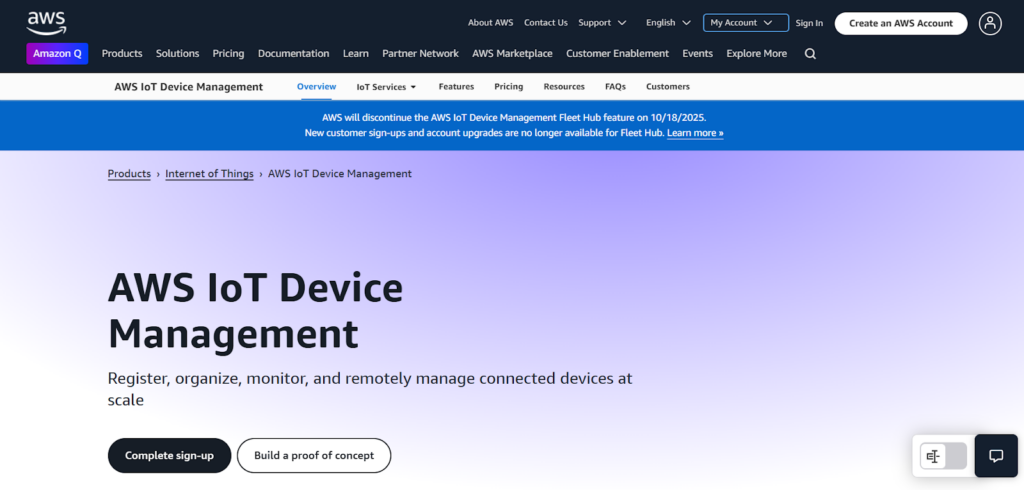
AWS IoT Device Management offers a cloud-based solution for remote monitoring and administration of IoT devices. Accessible from any location, it enables centralized control of devices worldwide.
Key Features:
- Batch and individual device management;
- Group-based automation for configuration updates;
- Secure connectivity with encryption and VPN integration;
- Real-time monitoring and log collection for SIEM integration;
- AWS IoT Device Defender for security and performance tracking.
Senseye PdM
Senseye PdM specializes in predictive maintenance, which involves utilizing machine learning to monitor industrial equipment for probable faults. It enables manufacturers to arrange maintenance during non-critical hours, reducing downtime.
Key Features:
- AI-driven predictive maintenance insights;
- Remote access for global monitoring;
- Automated alerts for potential equipment failures;
- Performance analytics to optimize factory operations.
MetricFire
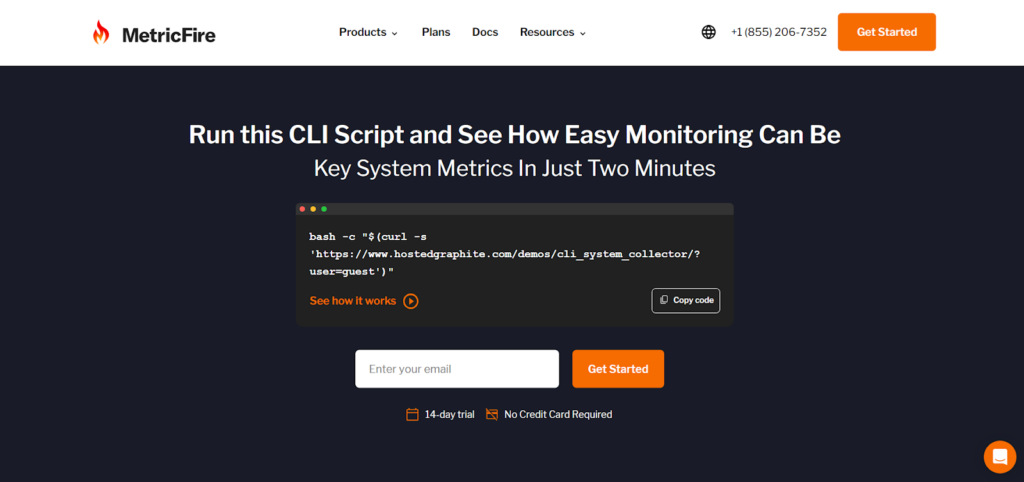
MetricFire is an all-in-one monitoring platform that uses open-source tools to track application and infrastructure performance. It supports Graphite and Hosted Prometheus configurations, allowing real-time data monitoring through customizable Grafana dashboards.
Key Features:
- Hosted Graphite with advanced capabilities;
- Intuitive Grafana dashboards for data visualization;
- Long-term data storage;
- Automated alerting via email, PagerDuty, and other channels;
- API integration for automation and team collaboration.
TeamViewer IoT
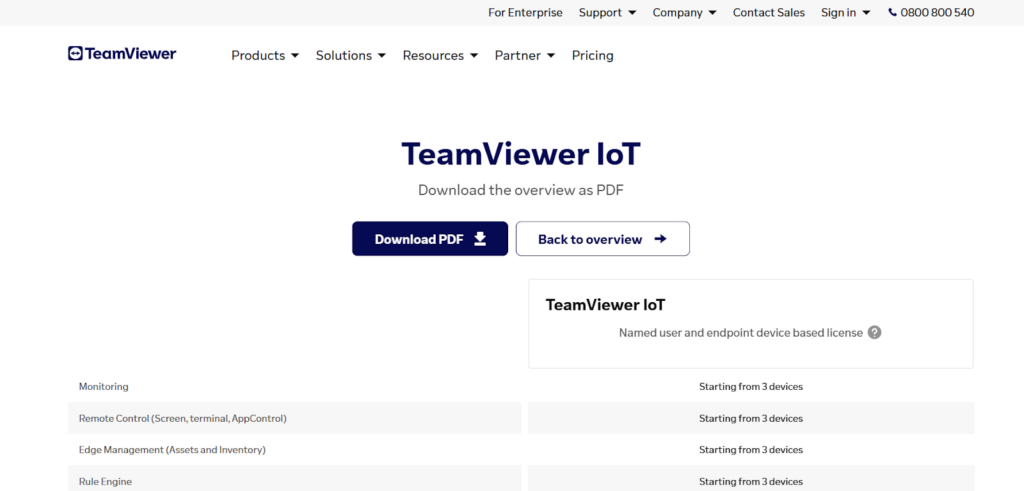
TeamViewer IoT extends its remote access technology to IoT monitoring, enabling centralized device management and real-time troubleshooting.
Key Features:
- Cloud-based remote monitoring and control;
- Secure communication with encryption protocols;
- Collaboration tools for multi-user access;
- Supports IoT security and antivirus monitoring;
- Free plan available for up to two devices.
SkySpark
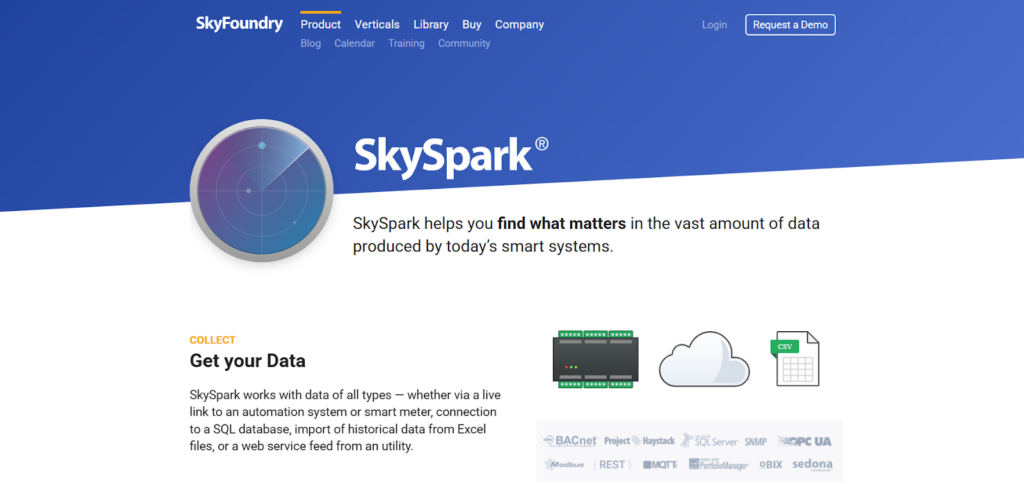
SkySpark processes large amounts of IoT data, filtering key insights to optimize device performance and efficiency. It detects system bottlenecks and ensures smooth operations across all connected devices.
Key Features:
- Advanced analytics for identifying performance trends;
- Real-time monitoring of IoT device efficiency;
- Alerts for early issue detection;
- Cloud-based accessibility from any location.
Datadog IoT Monitoring
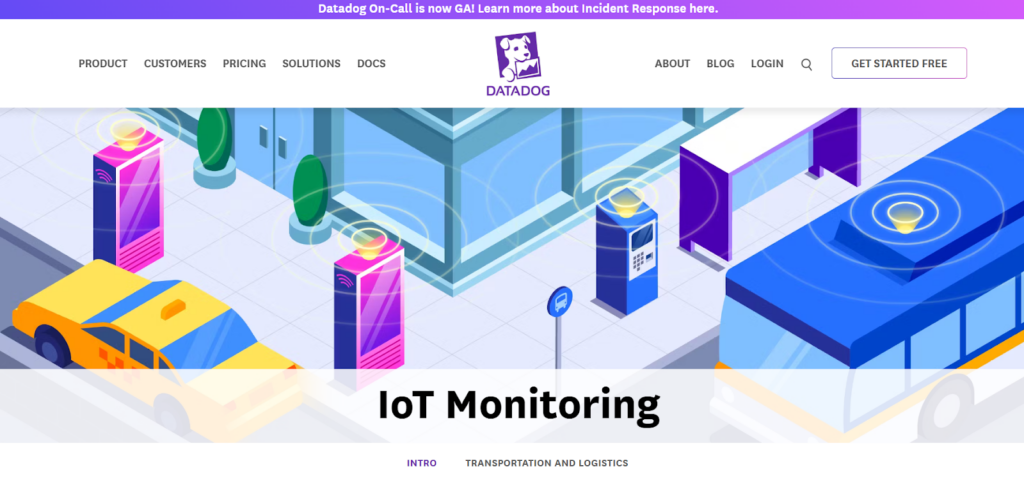
Datadog provides a cloud-based monitoring platform designed for IoT infrastructure. It deploys lightweight agents on devices to track system health and security in real time.
Key Features:
- Encrypted two-way communication for secure data transfer;
- Monitoring of over 100 device performance metrics;
- Automated configuration and security hardening;
- Integration with APIs for non-agent-compatible devices.
Domotz
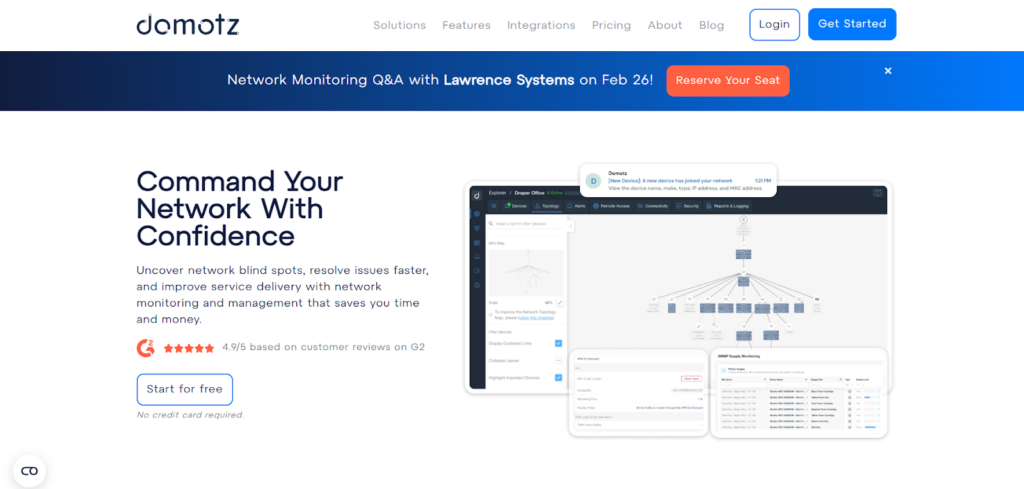
Domotz offers a cost-effective IoT monitoring solution with network mapping, security monitoring, and remote access capabilities. It is particularly suitable for businesses of all sizes due to its flat-rate pricing per site.
Key Features:
- Comprehensive network topology mapping;
- ONVIF integration for security camera monitoring;
- Encrypted remote access and VPN capabilities;
- Multi-site monitoring for centralized management;
- PSA and ticketing system integration.
Conclusion
IoT monitoring is key for businesses to manage devices, optimize operations, and make better decisions. It offers real-time data, boosts security, and supports predictive maintenance. As connected devices grow, efficient monitoring remains crucial for performance, cost reduction, and smooth operations. Companies using strong IoT strategies will improve efficiency, enhance security, and stay adaptable to tech changes.
Posted in blog, Web Applications
Alex Carter
Alex Carter is a cybersecurity enthusiast and tech writer with a passion for online privacy, website performance, and digital security. With years of experience in web monitoring and threat prevention, Alex simplifies complex topics to help businesses and developers safeguard their online presence. When not exploring the latest in cybersecurity, Alex enjoys testing new tech tools and sharing insights on best practices for a secure web.
